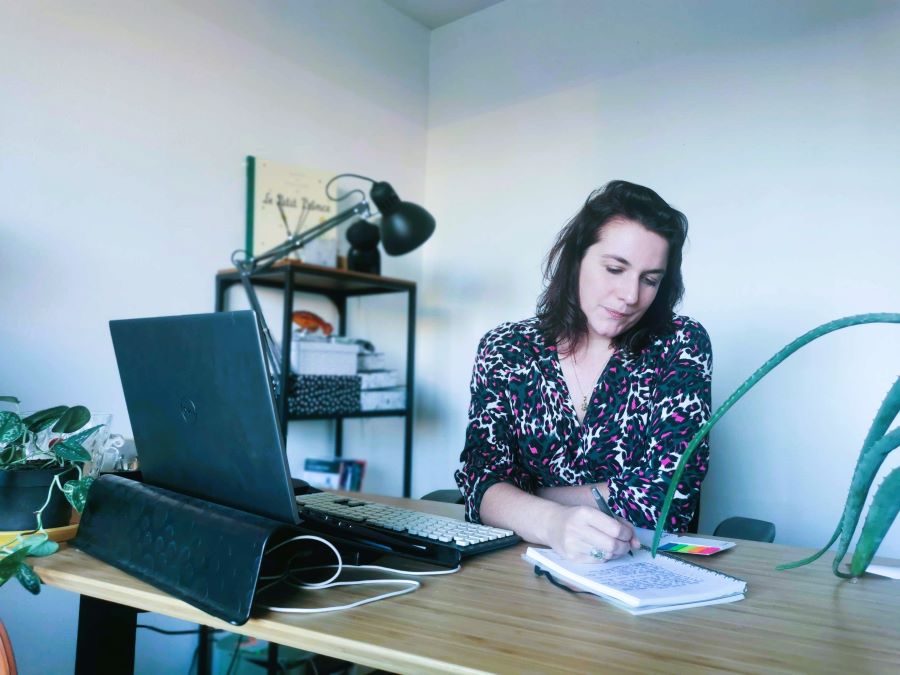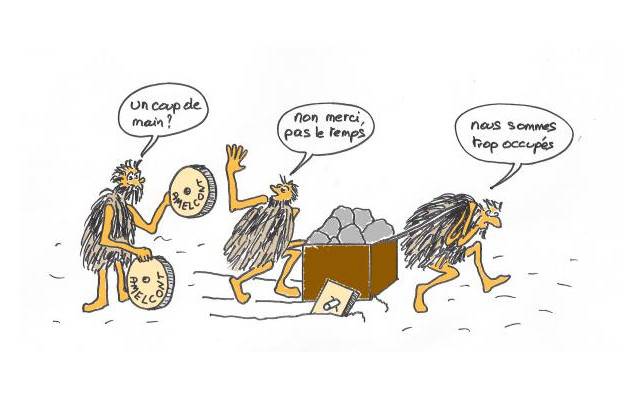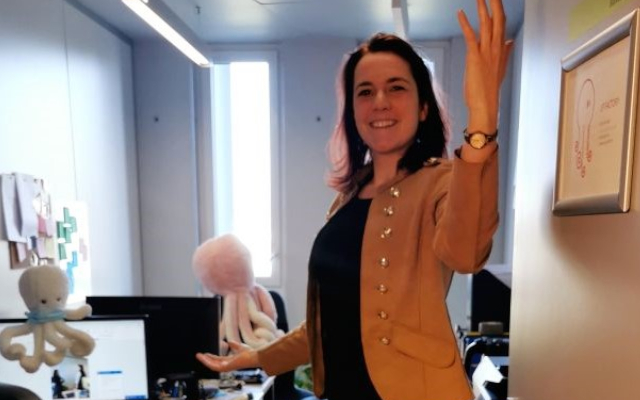Today, I thought I’d take you with me on a day’s assignment as a freelance assistant.
The job of executive assistant is as old as the hills, but it’s not always obvious to everyone how to go about it as a freelance assistant. The executive assistant profession has evolved considerably and can be broken down into many different roles: from office manager to personal assistant, there are many different professions. I’m currently working for two companies, one as executive assistant to the founder and president, the other as office manager to the two managing directors and the team.
What is a freelance assistant?
Let’s start with a few notions and popularizations. You probably have your own idea of what an executive assistant is. From Emilie in The Devil Wears Prada to Jeanne (the great absentee) in episodes of Le Palmashow, the job of an executive assistant can vary, and so can her day.
Freelance assistant terms
Let’s take a look at the most common terms used in the assistant profession:
- Executive assistant: “The executive assistant supports the company director in his or her duties. He or she is responsible for the administrative and organizational aspects, so that the executive can carry out his or her responsibilities in the best possible conditions.” – Cadremploi definition
- Executive secretary: depending on the context, the executive secretary has the same role as the executive assistant. There are sometimes slight differences in the responsibilities given.
- Administrative assistant: “An administrative assistant plays an essential role in the management of a company. He or she is responsible for document processing, as well as certain accounting tasks.” – Cadremploi definition
- Office Manager: “He or she will be responsible for coordinating human resources, managing finances and the budget, supervising general services and organizing both internal and external events.” – CEGOS definition
- Personal assistant: “The personal assistant is dedicated to a person who may be a private individual or a high-ranking professional. He or she performs a variety of tasks with the aim of making life as easy as possible for his or her employer.” – Institut de Conciergerie definition
In my own words
The executive assistant is involved in all tasks related to the needs of the manager he or she supports. This is also the case for the executive secretary. The administrative assistant, on the other hand, is not necessarily in contact with the managers and may be attached to other people in the company for mainly accounting and administrative tasks. The office manager, although attached to the management team, is very cross-functional and helps to facilitate the life of the team (or teams) reporting to the manager. Last but not least, the personal assistant works with a person (individual or manager) to facilitate their day-to-day professional and personal life. Mainly, these professions can be done as freelance assistant.
A day in the life of a freelance assistant
I currently have two jobs. For my first client, I’m a freelance office manager in a service and copywriting company with a dozen employees, working directly with the two directors. I hold this position directly in my client’s offices. With my second client, I’m a freelance executive assistant to the CEO and founder of a wholesale company specializing in a specific chemical product. I work part of the time on the company’s premises and part of the time remotely. Overall, I remain available for this client every day of the week.

My day as an executive assistant
9:30 AM:
Opening emails.
As a freelance assistant, often, I arrive before my client and start the day by opening all the received emails. I respond to those that do not require additional thought or work, delete (or unsubscribe from) unwanted emails, and make note of emails that require further work. In my role with this client, I mainly handle order modifications, new customer requests, and customer relations.
10:30 AM:
Meeting with the CEO.
After opening emails, we have a meeting with the CEO to discuss prioritized or urgent tasks. We may also discuss substantive work, which can cover a variety of tasks:
– travel preparations;
– invoicing and receivables tracking;
– pricing proposals;
– dealings with banks, accountants, suppliers, etc.
11:30 AM:
Addressing priorities.
Regularly, priorities involve working on pricing proposals to send to clients. I may also work on invoicing or receivables management as part of my duties as an executive assistant.
1:00 PM:
A quick meal.
2:00 PM:
Substantive work.
After handling urgent matters, I move on to substantive work. In this particular company, this includes: implementing management tools (CRM, invoicing, etc.), working on the company’s financial figures, and managing the website and communication…
4:00 PM:
Progress update.
Before the end of the day, it’s an opportunity to review client communications and progress. The goal is to clear as much information as possible to start the next day fresh and be prepared for any potential upcoming emergencies.
4:30 PM:
Reintegration.
After the meeting, I work on reintegrating the provided information. This may involve modifying tables or invoices, sending responses to clients, etc.
5:30 PM:
End of the day.
My day as an independant office manager
9:00 AM:
Opening emails & team requests management.
Upon my arrival, documents may have been placed on my desk, or team members may have specific requests. Changes to train tickets, invoicing, transfers for suppliers, etc. I also handle sorting through emails to address accounting, HR, or specific needs such as team parking subscriptions.
10:00 AM:
Payments and invoicing.
I go through all the invoices to be issued during the day and prepare transfers. I can also take care of expense reports or orders that the team may need.
11:30 AM:
Team & HR needs.
During this hour, my day as an office manager brings me to the needs of the team. I address new diverse requests to facilitate the team’s work. I can also handle HR needs, such as paperwork for a new hire or social documents, for example.
12:30 PM:
As a freelance assistant, I share time with the team as well. Lunch break with the entire team and a moment of conviviality.
1:30 PM:
Background tasks.
Early afternoon is often conducive to addressing fundamental issues. Currently, I am handling reconciliations of the new invoicing system and customer payments, for example. These are tedious tasks that require great concentration.
3:30 PM:
Leadership meeting.
Regularly, I have a meeting with one of the leaders based on the addressed requests to rebalance, ask questions to progress, or define the next tasks to be done.
4:30 PM:
Closure.
For this last half-hour, I integrate the information exchanged with the leader. I note tasks, deadlines, and other important information. I send the final emails and close the day to prepare for the next one.
5:00 PM:
End of the day.
My off-site days
The days at home are often simpler. As a freelance assistant, I work a set number of hours for my customers and mostly for my companies.
My tasks cover :
- managing emails and answering questions ;
- managing customer to-dos
- managing my companies’ to-dos;
- customer calls and meetings;
- writing blog posts;
- managing my companies’ communications ;
- etc.
Conclusion
A day as an executive assistant is a day organized between immediate availability and substantive tasks. On a day-to-day basis, it’s important for me to be able to make a difference, to always address all the issues in the time available to me. This can range from accounting tasks to setting up processes or new tools. It’s the variety of my days that I particularly enjoy and that makes me efficient. Your executive assistant’s day needs to be organized, while always leaving room for the unexpected, to maintain a high level of flexibility.





